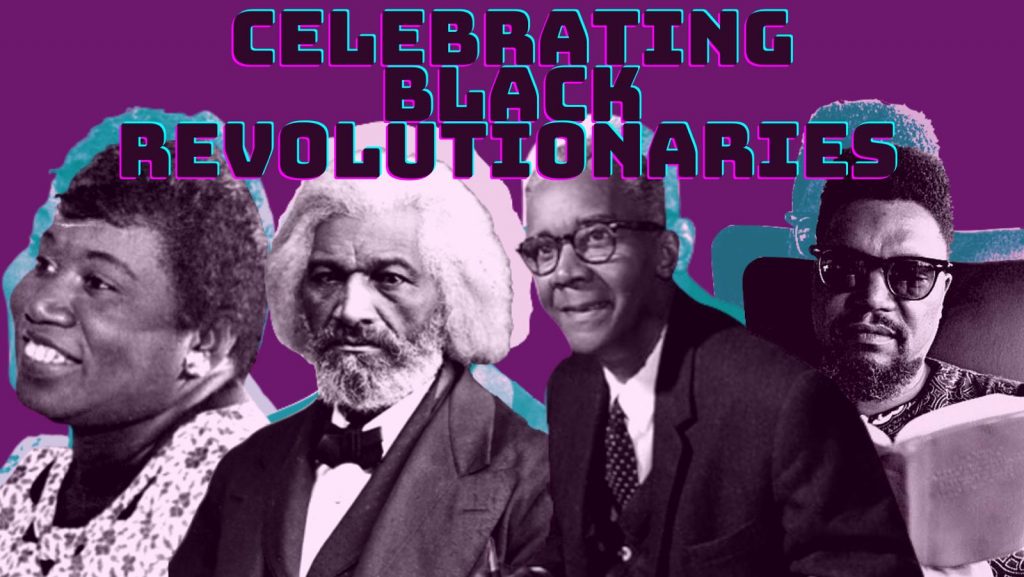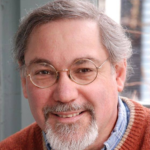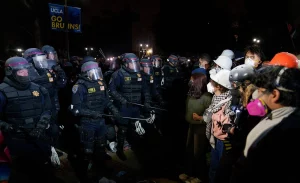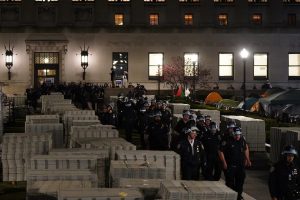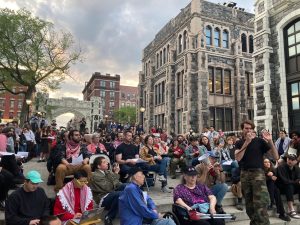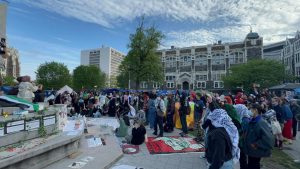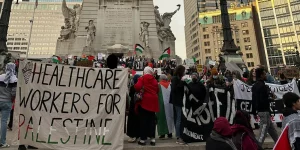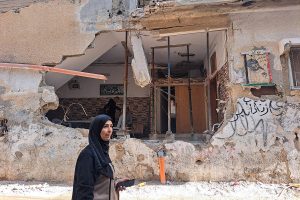During the Depression, the Works Progress Administration built a swimming pool for the small city of Monroe, North Carolina, about 25 miles southeast of Charlotte. For two decades, it was supported by municipal taxes — but was off limits to Black residents. Then in 1956, the local NAACP chapter began a drive to get swimming facilities for Black children. A number had drowned while swimming in local ponds and other “swimming holes” during the sweltering summers.
When the city claimed doing so was too expensive, the NAACP asked that a day or two each week be set aside so Black kids could swim at the municipal pool. That, too, was deemed too expensive. How could that cost anything, you might ask? Because the racists insisted that the pool would have to be drained and refilled every time. Eventually, the city said it might be able to have funds for a “Negro pool” within 15 years, but there was no promise.
Robert F. Williams, a notable figure in the history of the U.S. civil rights movement, was the head of the NAACP chapter at the time. He had been born in Monroe, the grandson of former slaves, and migrated to Detroit during World War II. There, he worked in an auto factory and helped organize for the United Auto Workers (UAW), and — at the age of 18 — fought in the race riot that rocked that city in the summer of 1943. He served in the U.S. Marines for a while, and then returned to Monroe in 1955.

In Monroe, Williams set out to transform the branch of the NAACP — an organization largely composed of politically moderate Black people typically better off economically than the great majority of Black workers in the United States (and with a significant number of white members). When Williams ran for president of the chapter, he promised to recruit a broader membership that was more like him: a combative militant who understood the oppression he faced as a Black man and as part of the working class.
Confronting the Klan
In “The Swimming Pool Showdown,” from his book Negroes with Guns,1Robert F. Williams, Negroes with Guns (New York: Marzani & Munsell, 1962). There is a documentary based in part on the book: Negroes with Guns: Rob Williams and Black Power, directed by Sandra Dickson and Churchill Roberts (2005: (1990; Gainesville, FL: The Documentary Institute, University of Florida). Williams tells the entire tale of that 1956–57 struggle. “We rapidly got the reputation of being the most militant branch of the NAACP, and obviously we couldn’t get this reputation without antagonizing the racists who are trying to prevent Afro-Americans from enjoying their inalienable rights as Americans. Specifically, we aroused the wrath of the Ku Klux Klan.”
It was the fight over the swimming pool that turned into a “showdown” with the Klan. When NAACP members organized peaceful picketers around the pool, they were fired on by armed opponents. The cops were there, but arrested no one. Everyone knew the shots came from the Klan — its local chapter had an estimated 7,500 members in a small city of only 12,000, according to press reports Williams cited.
Williams engaged the local Black community in a debate over how to defend protesters. The “nonviolent direct action” preached by Martin Luther King Jr. had a strong echo in the community, but Monroe picketers weren’t just being beaten — they were being shot at by Klansmen, whose ranks surely included cops. Williams had already applied to the National Rifle Association (NRA) — back when it was primarily a “sportsmen’s club” — for a local charter, and then organized his NRA local as the Black Armed Guard, which stood for what Williams called “armed self-reliance.” This predates by nearly a decade two better-known Black self-defense organizations: Deacons for Defense and Justice, which launched its first affiliated chapter in Louisiana on February 21, 1965, the day of Malcolm X’s assassination; and the Black Panther Party for Self Defense, which began in Oakland, California, in late 1966.
The 60-member Black Armed Guard wasn’t messing around. “We had bought some guns too, in stores, and later a church in the North raised money and got us better rifles,” wrote Williams. And when in the summer of 1957 he got word that the Klan planned on attacking the home of Dr. Albert E. Perry, a local physician and Monroe NAACP vice president, the Guard fortified the house with sandbags and settled in to wait for an attack. Klan members showed up and opened fire from their cars.
“We shot it out with the Klan and repelled their attack and the Klan didn’t have any more stomach for this type of fight. They stopped raiding our community.”
Monroe’s rulers were both incensed and terrified by the prospect of armed Black folks protecting themselves. They took action — but not in the way you’d expect.
“After this clash the same city officials who said the Klan had a constitutional right to organize met in an emergency session and passed a city ordinance banning the Klan from Monroe without a special permit from the police chief.”
As Williams later wrote in Negroes with Guns, “Racists consider themselves superior beings and are not willing to exchange their superior lives for our inferior ones. They are most vicious and violent when they can practice violence with impunity.”
Williams also noted that the Monroe confrontation with the Klan got little media attention. “No one wanted Negroes to get the impression that this was an accepted way to deal with the Klan,” he wrote. “So the white press maintained a complete blackout about the Monroe fight.” But it was largely absent from Black publications, too.
Clash with the Black “Leadership”
In 1959, Williams clashed with the national leadership of the NAACP after calling out the racist criminal justice system. After a Monroe jury acquitted two white men who had been charged with raping a Black woman, Williams stood on the courthouse steps and declared, “We cannot rely on the law. We can get no justice under the present system. If we feel that injustice is done, we must then be prepared to inflict justice on these people. Since the federal government will not bring a halt to lynching, and since the so-called courts lynch our people legally, if it’s necessary to stop lynching with lynching, then we must be willing to resort to that method. We must meet violence with violence.”
It was, of course, a call for self-defense. But white liberals began to pressure the NAACP, including the Harvard Crimson newspaper which featured the quote prominently in its pages. The statement was taken out of context. The New York Times editorialized against Williams, and the national NAACP suspended him from the organization.
Decades later, it was revealed that in 1959 Thurgood Marshall, who became the first Black justice on the U.S. Supreme Court but was “then an NAACP lawyer eager to placate J. Edgar Hoover’s FBI, passed the bureau information about Williams,” as the Baltimore Sun reported in 1997. It begs the rhetorical question for Marshall: Which side were you on? And it begs an even bigger question, in hindsight, of why there was no national mobilization to Monroe to defend its Black residents against the Klan — a response that would have made a lot of sense.
Williams made clear in Negroes with Guns what his self-defense position was all about:
I do not advocate violence for its own sake or for the sake of reprisals against whites. Nor am I against the passive resistance advocated by the Reverend Martin Luther King and others. My only difference with Dr. King is that I believe in flexibility in the freedom struggle. This means I believe in non-violent tactics where feasible … Massive civil disobedience is a powerful weapon under civilized conditions where the law safeguards the citizens’ rights of peaceful demonstrations. In a civilized society the law serves as a deterrent against lawless forces that would destroy the democratic process. Where there is a breakdown of the law, the individual citizen has a right to protect his person, his family, his home and his property. To me this is so simple and proper that it is self-evident.
Williams was pointing to the hypocrisy of the American “legal system” and the popular assertion that the United States was the most civilized and democratic country in the world — an assertion millions of people believed, including working-class white people. He makes clear that Black people in the U.S. South not only had the right to defend themselves, but they could not rely on the government to defend them — the very position the middle-class and conservative leadership of the national NAACP was putting forward. What Williams was conveying about defense may seem like a no-brainer now, but it is of its time. Many Black people in the South had gone through the experience of World War II, receiving military training on how to handle weapons and basic military tactics. They knew the power of the state meant that they could not simply take on the Jim Crow South from an offensive position, and had to think both tactically and strategically about how to fight against Jim Crow segregation and defend themselves. The fact that Williams was willing to disagree publicly with King and the other civil rights leaders was important, and a sign of the revolutionary implications of the civil rights movement and the mostly Black working-class masses who participated in the movement.
The attacks on Robert F. Williams by the Black liberal establishment in particular diminished support for him and the people of Monroe nationally, but in Monroe itself the work went on. Over the next two years, Williams continued to lead the NAACP chapter despite his suspension by the national headquarters. In 1961, another pool integration campaign was launched. And then James Forman of the Student Nonviolent Coordinating Committee (SNCC) visited Williams and agreed to assist him in organizing a Freedom Ride in Monroe. The local NAACP chapter became a base in the effort to integrate interstate bus travel, and picketers flocked to Monroe. Williams organized self-defense groups to protect the riders.
Government Persecution
It was the Freedom Ride that gave the state, anxious to silence Williams, its opportunity. With white mobs storming the Black section of Monroe, known as Newtown, Williams and his wife Mabel Ola Robinson Williams, also a militant activist, decided to leave town — but not before inviting a white couple to take refuge in their home. The couple, from a nearby town, had driven through Newtown because of street closures near the county courthouse and been confronted by people in the street. The state police accused Williams of kidnapping, and then the FBI issued a warrant charging him with unlawful interstate flight to avoid prosecution for kidnapping.
With his FBI wanted poster tacked up around the United States, Williams fled to Cuba, by way of Canada and Mexico. There he established a weekly radio program — Radio Free Dixie — that reached thousands of Black listeners in the U.S. South despite the U.S. government’s repeated efforts to scramble the signal. He published a newspaper, The Crusader, and wrote his book while in Cuba.
Subsequent trips took him to Hanoi, and he eventually settled in China, where he began to associate with some high-level functionaries in the Chinese government, including Mao Zedong. He traveled throughout Asia and Africa, and eventually resettled in Tanzania.
When Williams returned to the United States in 1969, he was immediately arrested in Detroit. He fought extradition to North Carolina on the kidnapping charges, which were ultimately dropped. Robert F. Williams died in 1996 of Hodgkin’s lymphoma.
Widespread Influence
Negroes with Guns was an influential book from its first publication. Huey Newton, one of the founders of the Black Panther Party, mentioned it often. Mauricelm-Lei Millere, founder of the African American Defense League, called it an inspiration.
The impact of Williams’s “armed self-reliance” cannot be overstated — even if he did not take some of the conclusions as far as they could go. It surely had an impact on Malcolm X. But Williams pushed the movement to greater militancy beyond the South and beyond Malcolm. Historian Timothy B. Tyson described “an activist in Watts” writing to Williams in Cuba in 1962 about sharing tapes of his broadcasts, and that “a play based on Negroes with Guns, Frank Greenwood’s If We Must Live, ran in Watts from July to December of 1965 to eager crowds and enthusiastic reviews. SNCC organizers brought The Crusader with them wherever they traveled. And in 1964, “when SNCC began to veer away from nonviolence, members cited Williams approvingly in the fierce internal debates.”
Tyson continued:
As black activists began to reject even the tactical pretense of nonviolence, the influence of Robert F. Williams continued to spread. By spring 1962 [wrote other scholars] “the example of the North Carolina militant … had a profound effect” within the Congress of Racial Equality (CORE). “Armed self-defense is a fact of life in black communities — north and south — despite the pronouncements of the ‘leadership’” a North Carolina activist wrote to Williams. …
“As I am certain you realize,” Richard Gibson, editor of Now! magazine in New York, wrote to Williams in 1965, “Malcolm’s removal from the scene makes you the senior spokesman for Afro-American militants.” Life magazine reported in 1966 that Williams’s “picture is prominently displayed in extremist haunts in the big city ghettos.”
Robert F. Williams built the Black Armed Guard and confronted the Ku Klux Klan with guns precisely because he understood what that North Carolina activist had written to him: “Armed self-defense is a fact of life in black communities.” He understood it from his experience in the union movement in Detroit, too. He knew, instinctively, that the Klan was an extension of the “special bodies of armed men” Vladimir Lenin wrote about in 1917, which he explained serve the interests of capital and the power structure to keep the exploited from rising up against their oppression.
The experience of Robert F. Williams provides an important lesson about the need for broad and deep self-organization of the working class and oppressed communities of color to fight a common enemy: the racist capitalist system that brutally exploits the great majority. For this to take place, it is necessary to build a revolutionary Marxist organization centered on the multi-racial and multi-gendered working class that fights for the forcible overthrow of capitalism worldwide. Only a society based on workers’ democracy — that imposes the will of the multi-racial working class to beat back the inevitable attempts of the capitalists to take back power — can provide real liberation and equality of all. The results of the civil rights movement proves that while capitalism can be forced to give some concessions, those concessions are always limited and temporary. Revolutionaries must cherish and study freedom fighters such as Robert F. Williams, while at the same time recognizing and working to overcome their limitations. That is what is required to achieve true liberation.
The legacy of Robert F. Williams should stand tall every month, not just during Black History Month.
Notes
| ↑1 | Robert F. Williams, Negroes with Guns (New York: Marzani & Munsell, 1962). There is a documentary based in part on the book: Negroes with Guns: Rob Williams and Black Power, directed by Sandra Dickson and Churchill Roberts (2005: (1990; Gainesville, FL: The Documentary Institute, University of Florida). |
|---|


